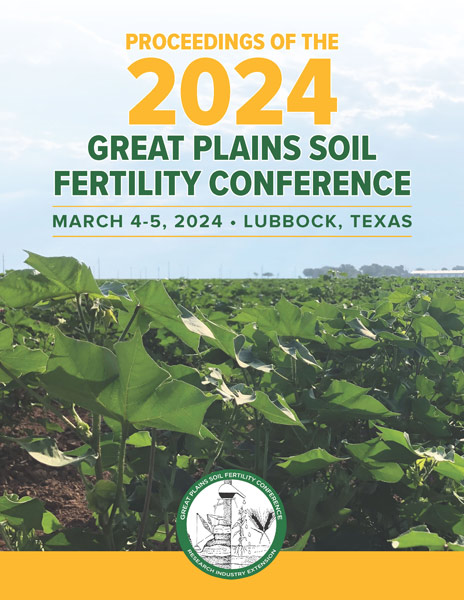Conference Proceedings Available!
The 2024 Great Plains Soil Fertility Conference Proceedings Book is now available! Click the link below to view the full document!
Proceedings
Authors
| Filter results1 paper(s) found. |
|---|
1. Shining Light on Novel Pathways for Potassium Fixation in SoilCotton has a high demand for potassium, and potassium significantly affects both cotton yield and fiber quality. Thus, bioavailability of potassium from the soil is paramount. Bioavailability and leaching of potassium to crops and from soils has been studied since the 1940s. However, problems that confronted agronomists in the 1980s continue to impact growers and crop production, including unpredictable potassium bioavailability and inconsistent plant response to fertilizer application under a... M. Siebecker, K. Coyle, T. Pham, I. Saldana haworth, E. Schmidt, A. Sharma, K. Lewis |
